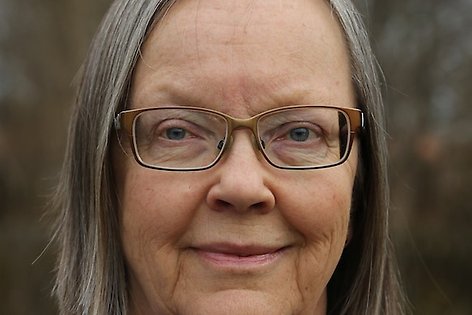Children can help us to a holistic understanding of the city
Listen to the kids! is the title of one of the workshops at Uppsala Health Summit in October, prepared by Dr. Kerstin Nordin, Lecturer in Landscape Architecture at the Swedish University of Agricultural Sciences in collaboration with Dr. Maria Nordström, Associate professor in environmental psychology, both at the Swedish University of Agricultural Sciences. In this interview Dr. Kerstin Nordin discusses how children’s voices can be an important input to urban planning.
Children’s experiences and viewpoints have proven to be a valuable resource for urban planners tasked with creating sustainable environments in different parts of the world.
But just talking to children is not enough; we must take care to really listen and be mindful about how, when and for which purposes they are involved.

Dr. Kerstin Nordin, Lecturer in Landscape Architecture at the Swedish University of Agricultural Sciences
According to the UN Convention on the Rights of the Child (CRC), adopted in 1989, children should be listened to in matters of importance to them. Children are citizens in their own right. When it comes to matters of urban planning, experiences show that the inclusion of children in the planning process can substantially improve the outcome and have additional benefits.
When we involve children in the planning of cities, we also offer them an experience of being part of a democratic process, of being trusted. Being heard and needed have positive effects on mental health, says Dr. Nordin. However, she continues, this assumes that we listen to them in earnest.
There are many examples of planning processes that include “talking the kids”, but few of them can claim that they have really listened. Dr. Nordin has for many years run projects where children, aged 11 – 12, have used GIS to map their own environment. The maps with the children’s written comments is an extremely valuable resource on how they perceive and use their environment.
Children possess knowledge that we, as adults, do not have. We cannot just draw on our own childhood experiences. Today, children use and experience their outdoor environment differently", says Kerstin Nordin.
Dr. Nordin mentions, as an example, how children in a Swedish city brought new knowledge about a grove, neighbouring their school yard and used as a playground. The grove was going to give way to new dwellings, but thanks to the children’s input, the plans could be changed to preserve the key areas for play, while still make room for new buildings.
When we provide the right conditions for a dialogue, and explain the goal and why we need their input, children aged 11 – 12 years are focussed and willing to contribute. They do understand that resources are limited, and that plans take time to carry out", says Nordin.
Kerstin Nordin primarily recommends to involve children in the development of areas where the children live and act every day, an environment they know well.
Our experience is that children can come up with rather modest suggestions for improvements, like “clean the walls from graffiti”; “repair the fountain” or “clean up the streets from litter”. While we as planners often tend to see problems, children also underline what they appreciate in their environment, what they care about and what works.
In addition, children tend to see and describe their environment in a holistic way, an understanding that we in our different administrative compartments tend to lose. They don’t differentiate between municipal and private areas or school yards. Instead, they describe them as, for example, 'the benches where I meet my friends', and thereby including both physical and social dimensions", says Kerstin Nordin.
So why don’t we listen more to the kids?
My experience and my point of view, says Dr. Nordin, is that this is partly due to how we are organised and our traditions and culture in urban planning. Our working culture favours the division of tasks and responsibilities. In the name of efficiency, we have become so specialised that we have lost the capacity to implement the holistic perspectives that children still have. The way children express themselves rarely fits into urban planners’ routines and language. We must also understand that urban planning largely is about handling various, often contradictory, requests in one process", says Dr. Nordin.
Of course, economic aspects influence too, especially as the value of land in urban areas increases rapidly. If we want to make room for children’s voices, in an honest way, we must learn from research as well as from practice on how to listen in a way that help children express their views, and the adults to understand and use their contributions", she continues.
Which are the best ways forward, to make full use of children’s knowledge and input in urban planning?
Involving politicians, on all societal levels, but especially at the community level where city planners, social administrators, teachers and the civil society amongst others all share the responsibility of children´s everyday environment", says Nordin.
The focus of the workshop, Listen to the Kids!, at Uppsala Health Summit will be on strategies for actions on how to involve children’s knowledge and experiences in urban planning of their outdoor environment. Focus will be on how to bridge the communication gap between children´s perspectives and planning assignments where competition over space is at stake.
Considering the holistic perspective that children bring to urban planning, I hope we will have a broad spectrum of experiences from different walks of society in the workshop. Apart from urban planning experts and decision makers, we hope to gather their counter parts in private real estate, sports facilities, schools and healthcare", says Dr. Kerstin Nordin.
